The Best Metal Albums of the 21st Century

Charting the best metal is a lot harder than it used to be. That’s in large part due to the sheer volume of it. Literal thousands of metal records are released every year, and true to the form of a style of music whose aesthetics are steeped in the occult and the esoteric, many of the greatest are obscure, overlooked gems. And as more and more artists experiment with heavy music styles and approaches, it becomes harder to draw the line of where metal ends and another genre begins, whether it’s Alcest’s ethereal blast-beat shoegaze, Jesu’s dream-doom or whatever Blut Aus Nord is doing at any given moment. Metal is always changing—that’s what makes the present such an embarrassment of riches for fans.
The timing of this list is arbitrary; we could have waited another three years to have a solid 20 years of music to pull from. Yet the longer the wait, the harder it is to narrow down, and as it is, this list was hard enough to rein in. Since 50 albums seemed like too few to fully capture the diversity of the past 16.6 years of metal, we chose the next best thing: 66.6—the fraction of the beast. One of the important objectives in making our list of the best metal albums of the millennium was to capture as much of a diverse spread of music as possible, from the more mainstream releases of the likes of System of a Down and Deftones to the underground cult-favorites such as Yellow Eyes and Zeal and Ardor. There are definitely albums we left out that we didn’t want to, and as a rule we set a cutoff at two albums per artist—otherwise we would have had a list unusually heavy on Converge, Mastodon and Neurosis. These 66.6 entries are what we consider the best metal albums of the 21st century. Where metal goes from here is anyone’s guess, but it’s an exciting time to be a hesher.
Update: This feature was originally published in 2017 and updated in 2021.
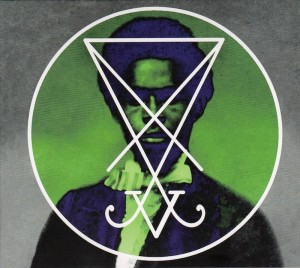 66.6 Zeal and Ardor – Devil is Fine
66.6 Zeal and Ardor – Devil is Fine
(2016; Radicalis)
It says a lot about Manuel Gagneux that he was able to turn a racist 4chan music challenge into one of the most wildly experimental and subversive metal releases in years. Blending black metal with gospel spirituals and slave narrative (with a healthy dose of Satanism), Zeal and Ardor’s debut is an unpredictable amalgam of black metal blues that still feels like only the beginning to something powerful and spectacular to come. As metal debuts go, it’s hard to make a stronger first impression than this. – Jeff Terich
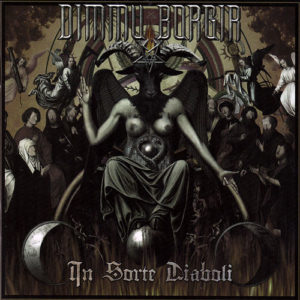 66. Dimmu Borgir – In Sorte Diaboli
66. Dimmu Borgir – In Sorte Diaboli
(2007; Nuclear Blast)
Those looking for a great gateway drug from mainstream metal into black metal, this is a good start. When black metal vets Dimmu Borgir released In Sorte Diaboli more than a decade ago, they took what I loved about black metal and gave it better production and hooks, and ICS Vortex sang his guts out in a way that elevated his pipes to a level on par with the greats. The cool kids would later deem this to be too enmeshed in traditional metal trappings to be cool enough for them, but they’re overlooking one of the band’s best albums and one of the greatest of the past 20 years. – Wil Lewellyn
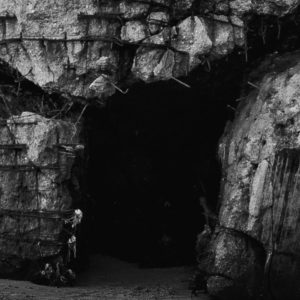 65. Amenra – Mass V
65. Amenra – Mass V
(2012; Neurot)
It’s called “atmospheric sludge” for a reason. Somehow the space (and, subsequently, tension) between the actual notes is just as powerful as the notes themselves. For the most part, Amenra eschew the gradual buildups common in post-rock and post-metal, which has the effect of making the climaxes even more powerful. Even when I think I see it coming from over a mile away, the actual event takes me by surprise every time. – Ben Braunstein
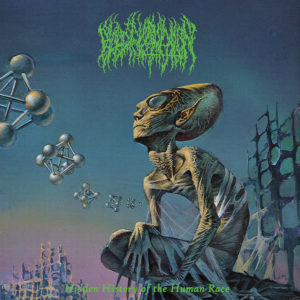 64. Blood Incantation – Hidden History of the Human Race
64. Blood Incantation – Hidden History of the Human Race
(2019; Dark Descent)
It’s tempting to read pure escapism into the aesthetics of Colorado’s Blood Incantation—pulp sci-fi alien art adorns the front cover of their down-the-rabbit-hole-conspiracy named second album, Hidden History of the Human Race. And I’d be lying if I said there wasn’t a lot of fun to be had when diving into their space-age death metal vortex. Yet what Blood Incantation crafts on just their sophomore release sounds like leagues beyond their already strong debut. Building on the triumph of 2016’s Starspawn, the group packs a lot to process into a relatively slim 36 minutes: relentless pummeling (“Slave Species of the Gods”), technical wizardry (“The Giza Power Plant”), interplanetary instrumental travel (“Inner Paths (To Outer Space)”) and a true epic, sidelong journey (“Awakening from the Dream”). Blood Incantation do more in four tracks what most bands can pull off with 10, crafting forward-thinking metal that doesn’t need to wear out its welcome to make its point. – Jeff Terich
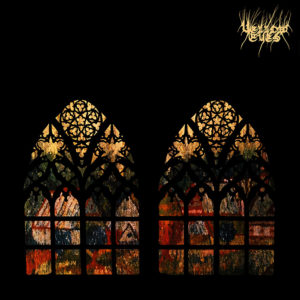 63. Yellow Eyes – Sick With Bloom
63. Yellow Eyes – Sick With Bloom
(2015; Gilead)
Ask the right people and it’ll be made perfectly clear that Yellow Eyes have been champions of the New York black metal scene for a few years now. Their 2015 effort, Sick With Bloom, put everyone outside the bustling metropolis on notice. The Brooklyn foursome’s foray on prototypical USBM stylings stems from brothers Will and Sam Skarstad’s time in Eastern Europe and Siberia. They brought back with them the ancestral fury of black metal’s earliest days and made it the focal point of their music—then added their own recorded field sounds to give it a touch of atmosphere. – Cody Davis
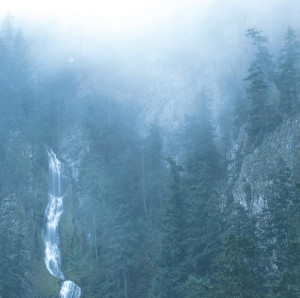 62. Wolves in the Throne Room – Diadem of 12 Stars
62. Wolves in the Throne Room – Diadem of 12 Stars
(2006; Vendlus/Southern Lord)
A debut that was masterful in its construction, tempered with gothic melodies and folk like inspiration, Diadem of 12 Stars provides a template of contemplative harmonies layered against throttling passages of death- and doom-tinged melancholy. This album helped contribute to the dialogue of American metal produced in the mid-2000s, while making a strong argument for the ever-increasing value and fidelity of independent production that resulted in what was truly a soul searching and harrowing tour of American black metal. – Brian Roesler
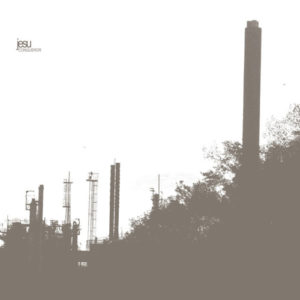 61. Jesu – Conqueror
61. Jesu – Conqueror
(2007; Hydra Head)
Justin Broadrick, a covert acolyte to harmony and devotee to abyssal heaviness, is the genius behind Jesu’s unique styling, a cross between fuzzy sonic landscapes and piano-accented harmonies with a distinct pop sensibility. Jesu’s second album Conqueror is far from pop, itself, but certainly within the same vicinity of strong harmonic and memorable compositions, which take their time to develop. Conqueror is meditative and strongly crafted metal that also embraces an aural beauty and unique sense of scale. – Brian Roesler
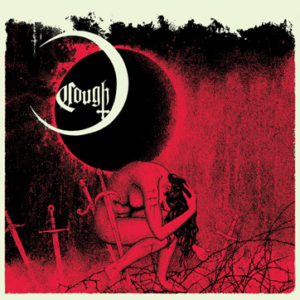 60. Cough – Ritual Abuse
60. Cough – Ritual Abuse
(2010; Relapse)
It’s quite a thing when a band manages to describe their entire aesthetic in a name. Cough may be a little subtler than Weedeater or Bongripper, but there’s a right way and a still-good way to listen to Ritual Abuse, and that’s enough of that. This is stoner-doom at its finest (occasionally flirting with death-doom), complete with awe-inspiring solos, alternating cleans and yells, riffs, progressions and vocal chants that’ll get stuck in your head for years, and, oh yeah, a simply gorgeous guitar fill around the 5:30 mark in “Crippled Wizard” that is nothing short of, uh, breathtaking. – Ben Braunstein
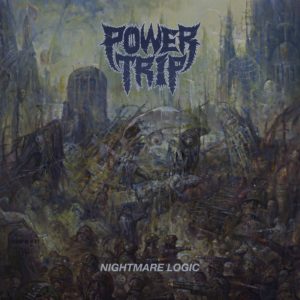 59. Power Trip – Nightmare Logic
59. Power Trip – Nightmare Logic
(2017; Nightmare Logic)
Power Trip came hard with a righteous fury on their second full-length album, opening 2017 with a sound backed by the kind of frustration that has fueled much of the best music of the year. An anti-fascist wrecking crew with an affinity for classic VHS horror, Power Trip cannonballs through Nightmare Logic with anger and determination, fighting their way through this waking nightmare with nasty whammy-bar riffs, blazing solos, a relentless power-chord crunch and the no-bullshit barks of frontman Riley Gale. The unstoppable rage and energy of Nightmare Logic would be enough to make it tool for survival in this fucked-up world, but the band’s songwriting has reached a new apex. The nonstop surge of aggression keeps it fun, but the melodies on Nightmare Logic are untouchable. – Jeff Terich
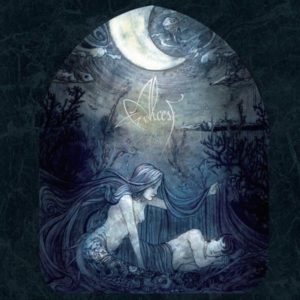 58. Alcest – Ecailles de la Lune
58. Alcest – Ecailles de la Lune
(2010; Prophecy)
Practically the founder of the subgenre of blackgaze, Alcest’s second LP remains a forever dreamy, anguished monolith of wavy guitar tones, blissfully black metal chord progressions and ever-escalating beauty. This is a perfect introduction to the softer side of metal. Yet that doesn’t mean that this album doesn’t hit hard, because it certainly does. That’s what makes it so damn special—it’s a wondrous examination of fanciful metal crunch and shoegaze beauty. – Brian Roesler
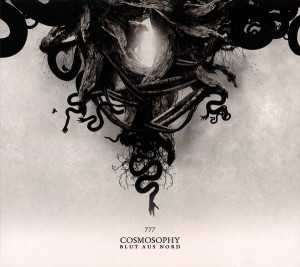 57. Blut Aus Nord – 777: Cosmosophy
57. Blut Aus Nord – 777: Cosmosophy
(2012; Debemur Morti)
The third and final act of the 777 trilogy, Cosmosophy remains, in many ways, Blut Aus Nord’s most strategic and experimental work, yielding an often introspective serving of psychedelic progressions and surprising, thumping grooves. Accented throughout with abrupt fury and intensity, this album stands as both an entry point into the discography of the mysterious French black metal maestro, Vindisval, and equally a summation of his talents and project’s scale. – Brian Roesler
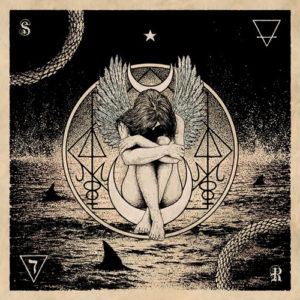 56. SubRosa – No Help for the Mighty Ones
56. SubRosa – No Help for the Mighty Ones
(2011; Profound Lore)
Even without the string section, this would be masterful melodic doom, but the violins (even when discordant) set it apart. The most perfect moment on No Help For The Mighty Ones comes around the 9:05 moment in “Stonecarver,” as the violins rise to a climatic point and lead guitarist/vocalist Rebecca Vernon sings the title line with a backing vocalist screaming the words behind her; it is bone-chilling. In a genre sometimes devoid of real cry-your-eyes-out emotion, this is a welcome surprise. – Ben Braunstein
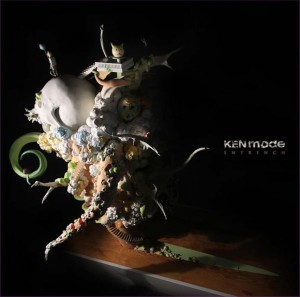 55. KEN Mode – Entrench
55. KEN Mode – Entrench
(2013; Season of Mist)
As much a noise rock album as a metal record proper, KEN Mode’s Entrench finds the Winnipeg band balancing the brawny post-hardcore influence of The Jesus Lizard and Unwound with a ferocious, at times ornate metal sensibility. For as heavy as its most sardonically intense songs hit (“Counter Culture Complex,” “The Terror Pulse”), what’s most remarkable about Entrench is the spiral staircase of strings and piano built on top of that murky foundation. It’s some of the most elegant bruising of the past half-decade. – Jeff Terich
 54. Enslaved – RIITIIR
54. Enslaved – RIITIIR
(2012; Nuclear Blast)
The Norwegian black metal innovators’ 12th album found them having totally crossed over from black metal into the kind progressive metal that Opeth once played. Clean vocals took over on this one and this factored into making it their highest selling and most accessible album to date. Enslaved, even at their least blackened, manage to offer a much more interesting take on progressive rock than those that carry the torch for the old school. And to Enslaved’s credit the had some pretty dope guitar tones dialed in, so that’s a bonus for fans of wild guitar heroics. – Wil Lewellyn
 53. Warning – Watching from a Distance
53. Warning – Watching from a Distance
(2006; Miskatonic)
Watching From A Distance may very well be the saddest album on this list. This deeply poetic record stands as Warning’s peak output and for very good reason. Patrick Walker’s voice seems to reach deep within a listener and pull on the toughest of heart strings. Walker’s guitar is met by Marcus Hatfield’s bass and Stuart Springthorpe’s drums, and together the trio builds a shimmering monument to sorrowful traditional doom that can be found in many of this generation’s torchbearers. – Cody Davis
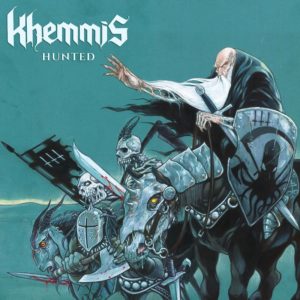 52. Khemmis – Hunted
52. Khemmis – Hunted
(2016; 20 Buck Spin)
Khemmis’s sudden ascent to into metal’s spotlight is anything but a fluke. The Decibel Album of the Year honors and Nuclear Blast deal are all a product of the Denver quartet’s doomed rock formula. It is a recipe that has them primed for long-term success as well—as proven by last year’s Hunted. Their sophomore effort is a captivating display of doomed variations on the styles of Metallica, Thin Lizzy and Iron Maiden that scratches an itch for classic hard rock and metal sounds. – Cody Davis
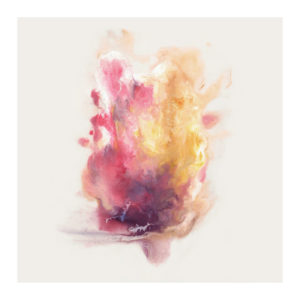 51. Big | Brave – A Gaze Among Them
51. Big | Brave – A Gaze Among Them
(2019; Southern Lord)
Big Brave’s greatest illusion is in convincing the listener that the one chord they carve out over the length of a nine-minute song is, in fact, much more than that. And it is—their songs, while rooted in a minimalist tension, spiral out into psychedelic soundscapes of resonant, heavy drones, noise, feedback and ambience, and with a greater emphasis on melodic immediacy, all without abandoning their central M.O. That A Gaze Among Them contains such a breathtaking range and diversity of sound in spite of this is testament to their creative vision, and a fascinating counterpoint to the idea that limitations are as we perceive them. This album is beautiful, massive, even crushing while harboring a delicateness, allowing ample room for space within their towering mass of sound. – Jeff Terich
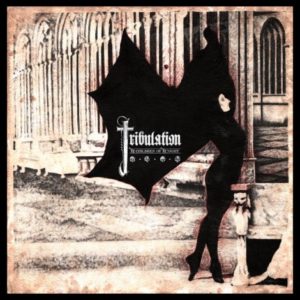 50. Tribulation – The Children of the Night
50. Tribulation – The Children of the Night
(2015; Century Media)
In just three albums, Tribulation made the pretty dramatic leap from thrashy old school death metal to progressive death to, eventually, psychedelic goth metal with ambitions of Maiden. The Children of the Night is steeped in the vintage horror of Carpenter and Argento (and Murnau) while infusing the spirit of classic metal of Mercyful Fate into an updated, progressively melodic package. Nothing about The Children of the Night sounds particularly old, but there’s an element of rock ‘n’ roll showmanship and glam-rock hedonism that too many corpse-painted heathens woefully overlook. Yet the fact that the band released a cover of The Cure’s “One Hundred Years” around the time of this album shows they’re far from traditionalists. It’s the odd metal album that just might find a seamless mix at the goth club. – Jeff Terich
 49. Pig Destroyer – Terrifyer
49. Pig Destroyer – Terrifyer
(2004; Relapse)
There’s not a lot of room for nuance in grindcore. Hell, grindcore doesn’t even recognize nuance. When your songs top out at a minute and your technique is inspired by the Tasmanian Devil, there’s generally only one setting. Yet the unsubtly-named Pig Destroyer ironically found space within grindcore, pivoting from the all-pistons-firing menace of their debut into the groove-laden destruction of Terrifyer. Don’t let the grotesque pair of breasts on the cover confuse things; Terrifyer is grindcore pulled into unique shapes and given a rare melodic immediacy. “Gravedancer” struts with sludgy immediacy—and cuts out in time for a disturbingly muffled theatre rehearsal—while “Restraining Order Blues” is one of the nastiest rock ‘n’ roll songs of the 21st century. There’s a rich amount of detail and creativity inside Pig Destroyer’s slaughterhouse. Just make sure not to blink. – Jeff Terich
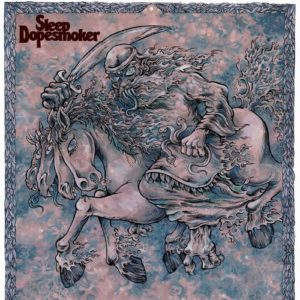 48. Sleep – Dopesmoker
48. Sleep – Dopesmoker
(2003; Tee Pee)
A friend of mine once wore a Sleep shirt with Dopesmoker’s cover art on the front of it. I asked him why I should listen to it. He looked at me said, “Because, it’s like so heavy, it sounds like the planet is having a bowel movement and can’t quite pass it.” It’s entirely possible that he was stoned when he said that. But that doesn’t matter. What does matter is that Dopesmoker really is one of the heaviest, most bone shatteringly intense records ever devised, a calculated near-infinite well of doom-fused, loosely connected vignettes of focused guitar centric passages. It’s a fuzzy, cosmic yolk of pulverizing metal. – Brian Roesler
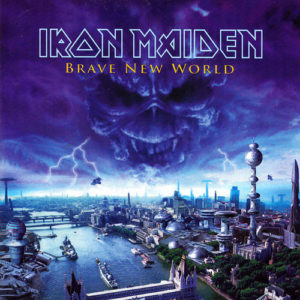 47. Iron Maiden – Brave New World
47. Iron Maiden – Brave New World
(2000; EMI)
Another comeback record, this time the return of the mighty Bruce Dickinson, one of the greatest metal voices, as well as a long-departed and equally pivotal guitarist in Adrian Smith. Feelings about the following records may vary, but Brave New World and its followup Dance of Death are rightfully regarded as documents of a band that regained its immortal swagger that gave us that unimpeachable string of perfect records in the 80s. – Langdon Hickman
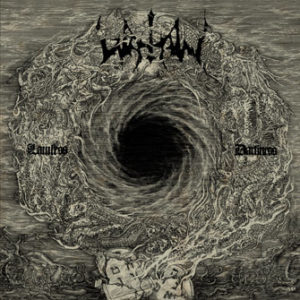 46. Watain – Lawless Darkness
46. Watain – Lawless Darkness
(2010; Season of Mist)
Watain’s Erik Danielsson was once a live member of Dissection, so he carried the black flame of the chaos dragon into this masterful work that takes the raw aggression of black metal and marries it was a strong sense of hook-oriented songwriting. The real factor here that needs to be the litmus test for these kinds of lists is the fact that this album sounds just as good and vital today as it did when it arrived seven years ago. In those years, black metal has risen to acceptance in the mainstream and gone through varied trends, but this album retains its majesty where others have already been forgotten. – Wil Lewellyn
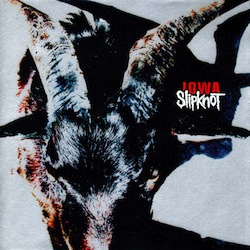 45. Slipknot – Iowa
45. Slipknot – Iowa
(2001; Roadrunner)
In 2001, Slipknot were at their heaviest. Their second studio album, Iowa, made good on a promise that the band would venture into darker expanses from their self-titled debut. As the pained screams of album opener, “(515)”, turned into the thunderous percussion and caustic vitriol of “People = Shit,” the Des Moines legion immediately made their case for leaders of a movement. Ironically enough, their stance as nü-metal titans became solidified when they utilized elements of thrash and even death metal in favor of the hip-hop motifs of their debut. “Disasterpiece” and “The Heretic Anthem” found Slipknot embracing their most extreme approach. The electronics and melodies were complementary this time around. Iowa instead locked in on the band’s technical prowess, ultimately making their sophomore album a dynamic, pivotal offering of metal in the early oughts. – Cody Davis
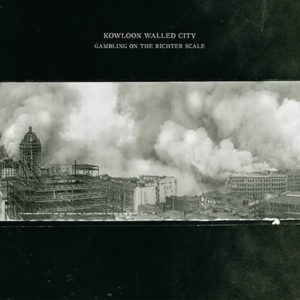 44. Kowloon Walled City – Gambling on the Richter Scale
44. Kowloon Walled City – Gambling on the Richter Scale
(2009; The Perpetual Motion Machine)
Calling a tone “crunching” is a bit of a cliche in metal writing, but upon hearing the opening notes of “Annandale,” I couldn’t help but visualizing some kind of metal grinder, one of seismic proportions, or rather a set of wooden teeth chewing on metal (if that’s even possible). The result is real ugly (much like the not-quite-tongue-in-cheek self-awareness of the title Gambling on the Richter Scale). It doesn’t have quite the earth-shattering terror of a band like Neurosis but rather a more gruesome, close-to-home reality—matched only in the social awareness lyricist Scott Evan exhibits throughout the album. The closest thing we have to a respite here is on the brilliant “Paper Houses,” with an almost blissful quality on the opening chord and the (relatively) upbeat verses. – Ben Braunstein
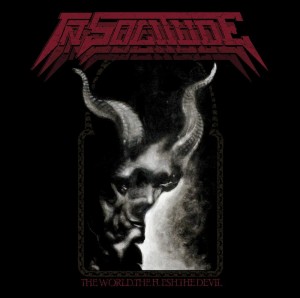 43. In Solitude – The World. The Flesh. The Devil.
43. In Solitude – The World. The Flesh. The Devil.
(2011; Metal Blade)
In Solitude, in their 13 years together, never played extreme metal. They didn’t play blackened anything, nor did they grind, djent or what-the-fuck ever. They played heavy metal, the likes of which had become almost a lost art by the turn of the millennium. Their sophomore effort The World. The Flesh. The Devil. made clear that there was still something new to be discovered in the two-guitar template laid down by Iron Maiden and Mercyful Fate back in the ’80s. Hell bent for leather and stamped with the number of the beast, In Solitude new their way around the classics, but in highlights such as the title track and “Serpents Are Rising,” proved there’s so much more to explore within an old-school approach. – Jeff Terich
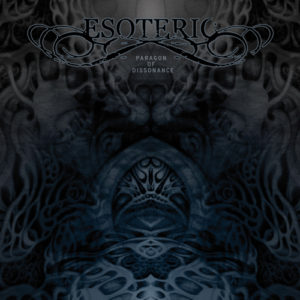 42. Esoteric – Paragon of Dissonance
42. Esoteric – Paragon of Dissonance
(2011; Season of Mist)
Those with friends who listen to Meshuggah and could use a gateway drug from mall metal into doom, this is the album. It doesn’t drone. Instead it weaves a web of dark guitar melodies that suck the listener in. Like Meshuggah there is a progressive quality that makes it otherworldly, but there are no nu-metal trappings to be found here. Esoteric prove throughout the album they can play the unholy fuck out of their guitars. Six years later, we’re still waiting to see where they are going to go from here. – Wil Lewellyn
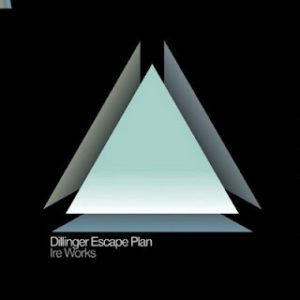 41. Dillinger Escape Plan – Ire Works
41. Dillinger Escape Plan – Ire Works
(2007; Relapse)
One could possibly plug any qualifying Dillinger Escape Plan album into this list and it would be met with resounding agreement. What makes Ire Works a worthy pick for the list was the newfound diversity in the band’s sound. Many new motifs seeped into the mathcore titans’ music: Electronics found their way into tracks like “Sick on Sunday,” Greg Puciato broke out falsettos for “Black Bubblegum,” and original vocalist Dimitri Minakakis and Mastodon’s Brent Hinds made guest appearances. Ire Works as a whole had a unique and colorful groove about it that separates it from anything else in the band’s discography. – Cody Davis
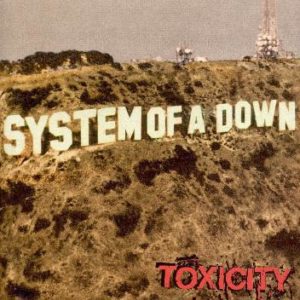 40. System of a Down – Toxicity
40. System of a Down – Toxicity
(2001; American)
The Zappa-like qualities of System of A Down’s early discography truly separated them from the run-of-the-mill bands that flooded hard rock and metal in the early 2000s. Toxicity is the most spectacular display of this eccentricity. Their second studio album debuted at no. 1 on international charts and bridged the gap between radio rock and underground metal for those who did not easily take to the nü-metal that dominated this era. Toxicity came packed with quick bursts of intensity that harshly opposed soft melodies; take “ATWA” or the timeless title track for example. It all felt very new and very rebellious for the time—especially considering their strong anti-war stance during a tumultuous time in the United States. – Cody Davis
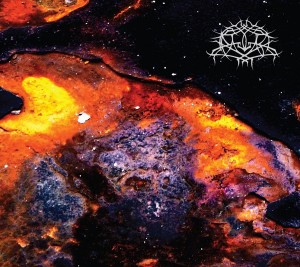 39. Krallice – Years Past Matter
39. Krallice – Years Past Matter
(2012; Self-released)
Krallice is a band where, honestly, any of the records from their first period would do. Taking the approach of Weakling (who appear later on this list) to its logical extreme, they merge hyper-technical progressive rock with black metal sonic aesthetics to create something that doesn’t sit comfortably in either camp. However, they seize the most potent elements of both, from virtuosity bent toward unexpected and euphoric moments in arrangement to intensely emotional and cathartic progressions, melodies and rhythms. A rightfully well-regarded band whose esteem, especially of those first four records, is sure only to rise as years pass. – Langdon Hickman
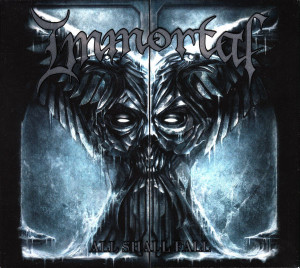 38. Immortal – All Shall Fall
38. Immortal – All Shall Fall
(2009; Nuclear Blast)
Immortal’s eighth and final album takes the vast, epic tundra of a fantasy world and sets it to music. Not that Sons of Northern Darkness did not also transport the listener to the land of the ice and snow, this just does it better. There is a razor-sharp, thrash-like precision to the riffs. The guitar sound is massive, and Immortal prove you can still play black metal without sacrificing hooks or melody. It effortlessly stands the test of time, as it is written in a way that exalts it into the hallowed halls of metal alongside Altars of Madness or Powerslave. – Wil Lewellyn
![]() 37. Panopticon – Kentucky
37. Panopticon – Kentucky
(2012; Handmade Birds)
Austin Lunn is a man of many talents. His works as Panopticon have become a storied part of the United States Black Metal world, and none is arguably more celebrated than his 2012 album Kentucky. Lunn effortlessly combined bluegrass and black metal to instill a sense of southern life and Appalachian history—something rarely seen in extreme metal. His odes to coal miners and rallying cries for union workers not only juxtapose these musical styles, but showcased Austin’s immeasurable talent and vision as a musician. The American roots “Come All Ye Coal Miners” features John Becker’s fiddle, coincidentally building toward “Black Soot and Red Blood,” which features the album’s most ferocious blackened moments. – Cody Davis
 36. In Solitude – Sister
36. In Solitude – Sister
(2013; Metal Blade)
Traditional heavy metal provides the essentials and fundamentals of nearly every metal genre under the sun. Sister is In Solitude’s final album, and on it they mastered their fusion of traditional heavy metal and the early occultick influences that would mark bands like Mercyful Fate and Witchfinder General as pivotal references for entirely new styles of metal. Sister is ultimately an album outside of time, an album that assumes its position not for influence but for the much harder abstract of quality; its hard to imagine this album not placing on lists no matter what era it was released in. A modern great. – Langdon Hickman
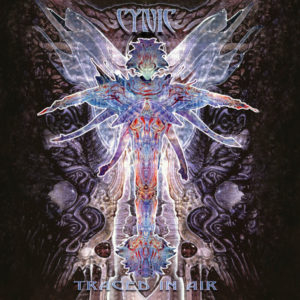 35. Cynic – Traced in Air
35. Cynic – Traced in Air
(2008; Season of Mist)
The marriage of metal and prog-rock can be a troubled one if the emphasis is simply writing songs that serve as bookends for shredding. Cynic broke the mold and married Yes-like vocals to tribal drumming and mathematically complex guitar drenched in effects while still managing to retain the aggressive undercurrent of the death metal band they once were. This is some of the best drumming ever recorded, so that certainly helps things, along with the bi-polar sense of dynamics that might find the bottom dropping out of a song at any point in time. For those who want to hear how progressive metal should be done, start here. – Wil Lewellyn
 34. Botch – An Anthology of Dead Ends
34. Botch – An Anthology of Dead Ends
(2002; Hydra Head)
Like any good (ambitious) mathcore record, An Anthology of Dead Ends revels in moments: the minimalist bass section at 1:31 in “Japam,” the doomy, bleak midsection and odd-meters in “Vietmam,” the syncopated riff at 2:21 in “Afghamistam.” (They are particularly good at developing riffs.) It’s not until the penultimate “Afghamistam,” though, that the EP really shines. Don’t get me wrong: “Japam,” “Framce,” and “Vietmam” are fantastic—and, for my money, a lot more interesting and textured than anything on the much-lauded We Are The Romans. And that’s notable for an all-but-posthumous release of assorted songs and ideas. But one listen to “Afghamistam” and we should all have a collective moment of grief at a missed opportunity. (At least we still have Narrows.) – Ben Braunstein
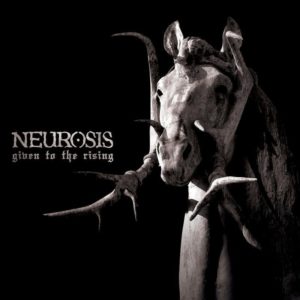 33. Neurosis – Given to the Rising
33. Neurosis – Given to the Rising
(2007; Neurot)
Everything Neurosis writes is heavy, but the tones on Given to the Rising have a refreshingly aggressive nature to them (especially after 2004’s gorgeous but quite sober The Eye of Every Storm), with the urgency and directness of a punch to the face. Just listen to “Distill (Watching the Swarm)” or the title track, which are so direct it’s disconcerting, even for them. Rather than utilizing the proper buildups common in post-metal, the band frequently employs ambient noise and keyboard drone, either as interludes (“Shadows,” “Nine”), intra-song transitions (“Given to The Rising”) or underneath the music itself (“Hidden Faces”). Dave Edwardson’s bass also thunders underneath like an ominous, heart-of-evil entity. This is essential Neurosis, even 15 years after Souls At Zero. – Ben Braunstein
Read more: Celebrate the Catalog: The complete Neurosis discography
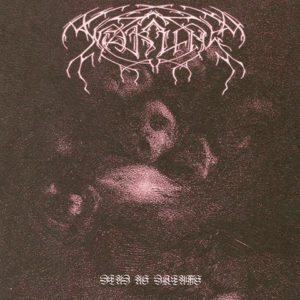 32. Weakling – Dead As Dreams
32. Weakling – Dead As Dreams
(2000; tUMULt)
You can hear Weakling’s influence in nearly every post-black metal band in existence. Like only the most luminary of musical groups, Weakling accomplished in one single record an as-yet unending cascade of influence. Their fusion of black metal with progressive rock, especially of the more technical and extended variety, was an idea pursued in the first wave and largely abandoned by the second, and while Weakling weren’t the only ones to seek to resurrect this style, they were far and away the ones to not only do it best but to reach the most people with their approach. – Langdon Hickman
 31. Kylesa – Static Tensions
31. Kylesa – Static Tensions
(2009; Prosthetic)
I attach a lot of nostalgia to Static Tensions nowadays, as it’s one of the first contemporary metal releases I really got into. “Said And Done” is the first track here to really utilize the twin-drummer setup. Unless you’re particularly well-trained at isolating instruments in a mix, I’d recommend a good pair of headphones just for this spectacle. Following that track is “Unknown Awareness,” a truly psychedelic beauty; the main riff is like a majestic bird of prey soaring through alternate dimensions. And, of course, there’s “Running Red”—and by now it’s clear I need a new word for “epic.” With its beautiful piano intro, its “Iron Man”-cum-breakdown pre-bridge/refrain, and its effortless balancing of typical sludge/stoner riffs with more proggy, almost psychedelic guitars, this track is easily one of Kylesa’s best. – Ben Braunstein
 30. Elder – Lore
30. Elder – Lore
(2015; Armageddon)
It’s difficult enough to create albums of 10- to 16-minute-long songs without any of them overstaying their welcome, but it’s much harder to make each moment within each sprawling rock odyssey to feel like an essential part of a titanic whole. There isn’t a single moment on Elder’s Lore that doesn’t feel earned, but more importantly there isn’t a moment that’s anything less than awe-inspiring. The Massachusetts heavy psych band thinks big, and on Lore they leave no thread of their sludgy stoner-prog odyssey loose. From the Zeppelin-esque stomp of “Compendium” to the Sunny-Day-Real-Estate-gone-sludge heroics of “Legend,” Elder build their Tower of Babel skyhigh, but as marvelous as the details are, it’s the sturdy architecture and feats of engineering that make this an unassailable work of mind-bending art. – Jeff Terich
 29. Altar of Plagues – Teethed Glory and Injury
29. Altar of Plagues – Teethed Glory and Injury
(2013; Profound Lore)
Irish metal project Altar of Plauges really matured after Mammal. Gone are most of the blackened aspirations, which are replaced with a Russian Circles-like groove and dark plunges into industrial. They combined crunchy Godflesh-like riffs with nasty blast beats. The two elements created a churning cauldron of angry riffs and scowling vocals. The bass-heavy mix pretty intense as well. There is a dynamic depth to this album that also brings clean vocals in for a few spots while consuming the listener with angular dissonance. It is a shame that this album served as the band’s swan song, it would have been interesting to see where they could have gone from this point. Though it would be hard to imagine they could have gotten heavier or darker. – Wil Lewellyn
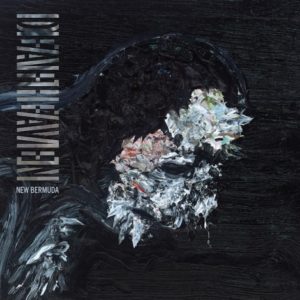 28. Deafheaven – New Bermuda
28. Deafheaven – New Bermuda
(2015; Anti-)
Deafheaven’s modus operandi is taking something harsh and making it beautiful, which is probably why they’ve gotten a lot of pushback from the skeptical within the metal community. That and the haircuts, I wager. But the reason the critiques often don’t hold is because Deafheaven are simply that good at what they do. Sunbather was the album that broke them on a major scale to a larger audience, but New Bermuda, their third album, was a refinement of their approach, which found them embracing their most explicit metal influences more openly, whether in the visceral black metal gallop of “Brought to the Water” or the thrash riffs of “Luna.” Yet as much as this is an intense, explosive piece of music, it’s also incredibly beautiful. “Baby Blue,” “Come Back” and “Gifts for the Earth” incorporate some of the most graceful passages of music they’ve recorded, in addition to a bit of country twang, post-punk darkness and atmospheric exploration. And in turn, Deafheaven made something quite gorgeous rock incredibly hard. – Jeff Terich
Read more: Like a Dream: An interview with Deafheaven
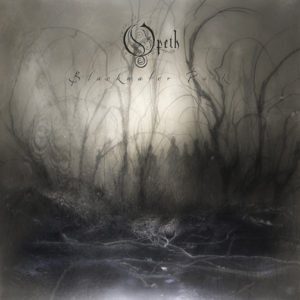 27. Opeth – Blackwater Park
27. Opeth – Blackwater Park
(2001; Music for Nations/Koch)
Once upon a time Opeth was a death metal band from Sweden. They used keyboards and even clean vocals to make a dark yet adventurous sound for of death metal, and eventually their singer, Mikael Akerfeldt perfected the art of clean singing and added a real sense of soul into what he did. But he kept his really mean growl even as their brand of death metal became more melodic. The aggression of what they did met the perfect balance with their melodic side on Blackwater Park. This is the sound of a band at the top of their game, and much like Metallica it creates a strange disconnect when considering what they sound like now. But with songs as powerful as the epic “Bleak,” it’s hard to argue against this as being one of the most important metal albums of the past 20 years. – Wil Lewellyn
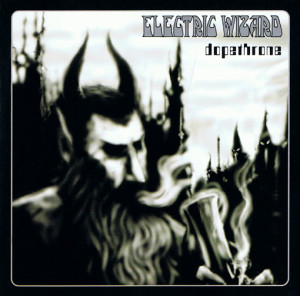 26. Electric Wizard – Dopethrone
26. Electric Wizard – Dopethrone
(2000; Rise Above)
Ah, Dopethrone… I’m sure it’s possible to talk about Electric Wizard’s magnum opus without mentioning weed, but why would we? It’s clear that the band was pretty fucking baked when they made this record, and subsequently (though maybe this is just high logic) it should sound better to the listener when they are, similarly, under the influence. But don’t mind me; this legendary record is an experience regardless of how you listen to it. “Funeralopolis” is obviously essential, but “Barbarian,” “I, The Witchfinder,” and especially “Vinum Sabbathi” are just as massive. I read a review somewhere once upon a time that, essentially, argued that without the numerous pedals, feedback and miscellaneous effects that the band used, they would be your average, middle-of-the-road stoner-doom band. Maybe that’s true—if there’s a mix out there that manages to isolate the instruments in that way, I’d love to hear it. (I wouldn’t call this lo-fi, but these instruments are buried under a lot of fuzz, for sure.) But you know what? Who cares! I sure don’t. The only question remaining for me is whether Dopethrone or Dopesmoker is intended to be the better under-the-influence experience. – Ben Braunstein
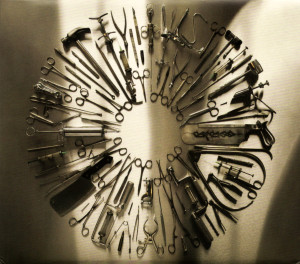 25. Carcass – Surgical Steel
25. Carcass – Surgical Steel
(2013; Nuclear Blast)
Those who have never been brave enough to dive into the murky waters of death metal would benefit from seeing Carcass live. The UK group piledrive their way through a set with barely any breaks, bassist/frontman Jeff Walker able to get a crowd pumped with just a few chants and the flick of about two-dozen guitar picks. And the riffs—my god, the riffs! All of that power, immediacy and fun can be found on the band’s 2013 release Surgical Steel, their first release in nearly two decades. The band is in top form, infusing their death metal with strong melodies and feats of instrumental inhumanity, with the requisite obscure medical references and some of the best songs they’ve ever written. It’s death metal that feels a lot like great rock ‘n’ roll, which is why they’ve often been described as death ‘n’ roll. But this isn’t that, exactly. It’s a kickass statement from one of death metal’s most important bands, reminding everyone why they’re the best at what they do. – Jeff Terich
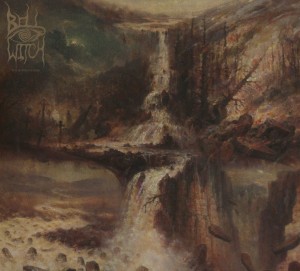 24. Bell Witch – Four Phantoms
24. Bell Witch – Four Phantoms
(2015; Profound Lore)
To describe Bell Witch as a funeral doom band and this as their magnum opus would be to undercut it of much of its power. Four Phantoms is much like Gorguts’ Coloured Sands, in that it executes the scale and organizational elements of orchestral music without relying on the tired tropes of what it means to be symphonic. Like Coloured Sands, it is also an album whose interests are wider than metal. Its power comes in the scoring of a moribund tale, one that requires the most profound and orchestrated of doom metal to convey; it is the rare album that is metal by intent and not reflex. – Langdon Hickman
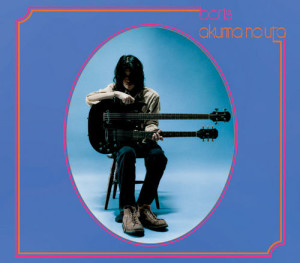 23. Boris – Akuma No Uta
23. Boris – Akuma No Uta
(2003/2005; Diwphalanx/Southern Lord)
Recorded in a single take, on analog tape no less, this album stands as a convincing argument for the addition of gritty pops and crackles, reverbs and scorching static. Akuma No Uta feels like an ancient piece of metal because it was engineered like one, but it remains a classic in its own right. Oscillating between an unhealthy fixation on sludge and incorporating feedback-drenched acid rock, in its entirety, it’s a dirty, grinding work whose spastic tonal shifts and sheer variety of sound are beyond impressive. – Brian Roesler
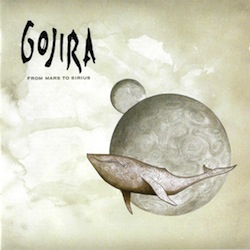 22. Gojira – From Mars To Sirius
22. Gojira – From Mars To Sirius
(2005; Prosthetic)
There is no adequate way to describe Gojira’s sound. The avant-garde and progressive flourished death metal of Morbid Angel, extended techniques and all, married to a Meshuggah-esque sense of rhythmic tension and release in Neurosis-density arrangements unfurling in psychedelic and hyper-emotive conceptual and production frameworks that come across like a fusion of Mastodon and Devin Townsend. A rare band where you can pluck each reference one by one, but where, like Opeth, they come together into a sound that you cannot find anywhere else. At the time, this was their first international release; it seemed as though they burst from nothingness fully formed, releasing a startlingly perfect progressive death metal record seemingly ab nihilo. Truly, any number of their records could have been selected for a list like this. But this is the eruptive moment, and each song and the album as a whole still feel as conceptually and musically relevant as it did when it was released over 10 years ago. – Langdon Hickman
 21. Thou – Magus
21. Thou – Magus
(2018; Sacred Bones)
It’s complicated enough to get a handle on Thou’s ample catalog, but with five new releases in just this year alone, it got a little more messy. But one shouldn’t look three gift EPs and a split with Ragana in the mouth. That they were all really good says quite a bit about the Louisiana sludge metal band, particularly because Magus is a powerful achievement on its own, a double-LP length sprawl of devastating dirges and the murkiest guitar sound in the world. And despite setting the bar ever higher over their career, Thou have crafted a stunning career summary with Magus, an album that balances their ethereal bleakness, grungy tunefulness and abrasive roar into one truly outstanding set of songs. I’m not sure if I’m ready to call it their best album—they have some other really spectacular ones. But I do know that this is nothing short of brilliant, a metal album that brings all the heaviness, intensity and riffage that a metal album should yet still offers a great deal of nuance, intricacy and introspection. There aren’t many bands like Thou, simply because Thou doesn’t follow any example but their own. We’re fortunate to be living in the same time as a band that delivers an album that contains as much to explore as this. – Jeff Terich
 20. Boris – Pink
20. Boris – Pink
(2006; Southern Lord)
A renowned album for a good fucking reason. Instead of uncompromising expenditures of sonic fury and metal genre fusion, Pink is a harmony-driven testament to the excitement of metal itself. From start to finish, it’s an adrenaline parade, in which the temptation to headbang or throw a pair of devil horns to a room of no one (except maybe your significant other, who’s watching from the kitchen and is convinced you’ve fucking lost it) must be reisted—as if such a thing were even possible. Pink is a lot of things, a menagerie of smooth earworm harmonies and unscalable walls of reverb that would turn any shoegazer’s head. – Brian Roesler
Read: Our beginner’s guide to the music of Boris.
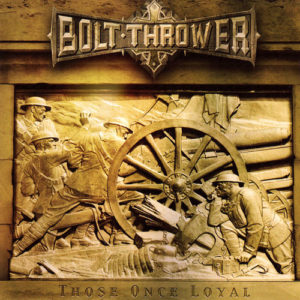 19. Bolt Thrower – Those Once Loyal
19. Bolt Thrower – Those Once Loyal
(2005; Metal Blade)
Though the band technically broke up last year after the death of drummer Martin Kearns, Those Once Loyal ended up being a proper send-off for the UK death metal legends a good decade beforehand. Their eighth record, like a lot of theirs before it, tackles World War I lore, while their music carried a tone analogous to the global conflict as well. Baz Thomson and Gavin Ward’s soaring riffs signaled deadly triumph while Jo Bennett’s thunderous bass and Martin Kearns drums rode a low-end section that rolled like a Mark I tank. “The Killchain” and the title track are indicative of this warring quality of Bolt Thrower’s music, bolstered by Karl Willetts’ stirring storytelling and fearsome bark. The words of the album eerily ring true for today as society grapples with unjust death under various circumstances. Yet, ultimately Those Once Loyal stands as the quintessential Bolt Thrower album. The band scrapped all work on a follow-up to it because they felt what they wrote was inferior. Given it’s placement here, it’s hard not to see the album as a death metal ideal. – Cody Davis
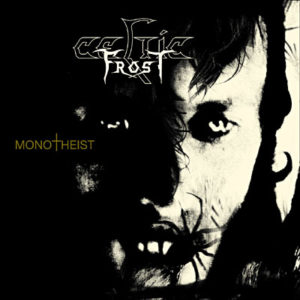 18. Celtic Frost – Monotheist
18. Celtic Frost – Monotheist
(2006; Century Media)
Monotheist is the perfect way to end a band’s career and recapitulates a theme of Celtic Frost along the way. If the direction change of Hellhammer’s final release, the EP Apocalyptic Raids, acted as a suitable introduction to the proto-black metal avant-garde thrash of Celtic Frost, then Monotheist is the perfect bridge toward Thomas Gabriel Fischer’s followup band Triptykon’s blend of avant-garde, progressive doom metal. It had been 16 years since the last proper Celtic Frost record, and roughly 20 since an inexplicable turn to hair metal on a single album. To say no one expected this album would be an understatement; to say no one expected it to be good profoundly more so. And yet not only did this album exceed low expectations, it sits as perhaps the greatest album of Celtic Frost’s entire career, greater even than their epochal first three albums. This is the band that, with Mercyful Fate, Venom and Bathory, forged the essence of what would become black metal, releasing albums that are still considered unrivaled. That they would return and offer a record that was as much a perfect finale to their requiem that was also the perfect door toward Fischer’s new ideas is an immeasurable gift. – Langdon Hickman
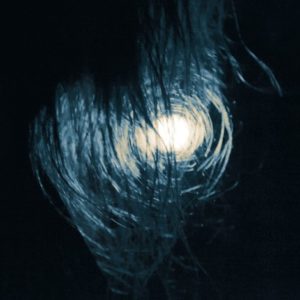 17. Oranssi Pazuzu – Värähtelijä
17. Oranssi Pazuzu – Värähtelijä
(2016; 20 Buck Spin/Svart)
“The ‘resonator’ refers to an organic alien symbiosis inside your guts, that is growing inside and changing you, and in the end you lose track of your identity.” That’s how Ontto, the bassist for Finland psych-metal experimentalists Oranssi Pazuzu, described the meaning behind the title of their epic acid trip of a fourth album. Indeed, it feels alien, perhaps even hostile, but there’s something awe-inspiring and powerful about the ambitious sprawl of the band’s work. Tangentially a black metal band, Oranssi Pazuzu uses the loosest of genre foundations upon which to build their oscillating psychedelic UFO. More indebted to Can and early Pink Floyd than Darkthrone, Värähtelijä opens majestically and breathtakingly with the 11-minute “Saturaatio,” a dynamic opening salvo for one of the strangest and most unconventional metal listening experiences of the 21st century. They play with time signatures (“Hypnotisoitu Viharukous”), build side-long monuments of horror (“Vasemman Käden Hierarkia”) and never pass up an opportunity to do something at once awesome and unfathomable. Embrace the organic alien symbiosis, take the ride. – Jeff Terich
Read more: Cosmic darkness: An interview with Oranssi Pazuzu
 16. Deftones – White Pony
16. Deftones – White Pony
(2000; Maverick)
White Pony is a special beast. It single-handedly informs the scale and breadth of nu metal’s influences, from post-rock to trip-hop and any genre with “dream” in the title. It’s an album steeped in ambiguity of place and scale, always deceiving, always scheming in some brilliant aural fashion. Enforced by Chino Moreno’s whisper-quiet, sullen musings that explode into uncontrolled screams, White Pony is a fever dream that is always at its best when it experiments and deviates from any sense of traditional song structures, which it does frequently and often. Peerless, weird, aggressive, it’s Deftones at their absolute finest. – Brian Roesler
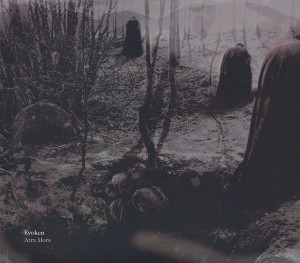 15. Evoken – Atra Mors
15. Evoken – Atra Mors
(2012; Profound Lore)
The shadow cast by funeral doom monoliths Evoken is massive, having rightfully earned a reputation for being pioneers of American funeral doom. Since their days as Funereus and Asmodeus in the early ’90s, the numerous musicians that have comprised the mighty Evoken have built soul-crushing extreme doom. None of which might be as bleak and as heavy as 2012’s Atra Mors. Led by lineup veterans Vince Verkay and John Paradiso, they push toward their third decade of existence without losing a shred of force.
The New Jersey quintet’s most recent effort, in true funerary form, tracks over an hour of glacially-paced, anxiety-inducing dirge. “Descent Into Chaotic Dream” and “Grim Eloquence” showcase Evoken’s masterful shifts between somber chords and spoken word towards towering edifices of riffs and crash cymbals. These passages do what every great funeral doom record does and elicits unmeasurable negative emotion. For Evoken on Atra Mors, this dread came as second nature. It allowed them to explore significantly more expansive landscapes and eventually made this record an essential part of funeral doom’s canon. – Cody Davis
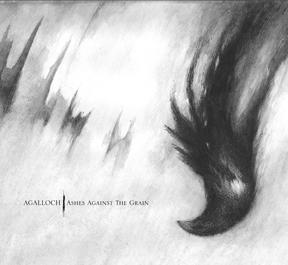 14. Agalloch – Ashes Against the Grain
14. Agalloch – Ashes Against the Grain
(2006; The End)
Agalloch’s third and most celebrated album is, beyond hyperbole, one of the best metal albums ever. Ashes Against the Grain found them coming out of being more of a neo-folk tinged black metal band to embracing a lush sound that crossed multiple sub-genres. The guitar tone is more post-rock in nature, though they drone out into the heavens with the some wonderment that many shoegaze bands do The rasped snarl of John Haughm sat perfectly against the punches of this band working at the height of their collective musical prowess. It exudes epicness.
One of the most dynamic albums to ever rightly or wrongly be called “black metal,” it has a tremendous ebb and flow. While the band later shook off the black metal sound, this album had plenty of melancholy draped over it, as songs like “Falling Snow” carried a triumphant gallop. Ashes Against the Grain proves that folk and post-rock can co-exist with metal in a dignified fashion that does all moving parts justice. – Wil Lewellyn
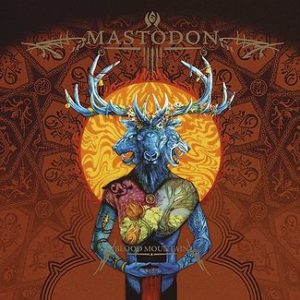 13. Mastodon – Blood Mountain
13. Mastodon – Blood Mountain
(2006; Reprise)
The Metallica reference holds. The influence of Mastodon on modern metal, from its sound to its startling rise in stature, is inestimable. Mastodon came along, and for four records seemed to single-handedly undo what hair metal, grunge, nu-metal and bad radio rock did the genre. In the Metallica comparison, Remission is their Kill ‘Em All, a punky and raw blast of pure potential mixed with asphalt grit. Leviathan is their Ride the Lightning, the moment the alchemical fusion of elements begins in earnest, that heart-stopping Big Bang moment. Crack the Skye, the final of that tetralogy, would be their And Justice For All, proggy to the point that there was no path forward from that moment, only sideways, only back. Which makes Blood Mountain their Master of Puppets, the peak of the mountain, when all elements were in perfect balance: rock, psychedelia, prog, thrash, grindcore, avant-gardeisms and sleaze all make equal turns here, in a better and more sympathetic balance than they’d ever accomplished or ever would again. Not just one of the best metal albums of this millennium; one of the best metal albums ever. – Langdon Hickman
 12. YOB – Clearing the Path to Ascend
12. YOB – Clearing the Path to Ascend
(2014; Neurot)
“It’s time to wake up.” proclaims famed British philosopher Alan Watts, introducing “In Our Blood,” the opening track of the seventh studio album from Eugene, Oregon’s YOB. The doom trio led by metal’s beacon of hope, Mike Scheidt, reached their zenith with Clearing the Path to Ascend. It represents YOB at theirheaviest, both in sonic and emotional weight. Scheidt took vocal lessons prior to creating the album, while Travis Foster and Aaron Rieseberg continued to flourish as a drummer and bassist, respectively, and the low-end duo is largely responsible for much of the earth-shifting heaviness. The holistic growth of YOB resulted in some of the most striking and poignant compositions in metal over the last 20 years. “Marrow” itself, an 18-minute opus of catharsis, possesses the ability to move the most hardened men to tears. For how much Clearing the Path has going for it, it says a lot about a band who manage to produce their greatest work to date 20 years after their formation. – Cody Davis
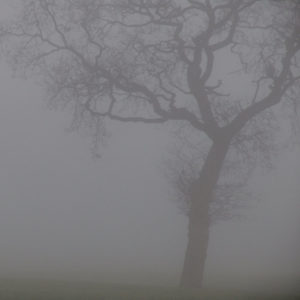 11. Jesu – Silver
11. Jesu – Silver
(2006; Hydra Head)
First things first: insofar as you could call Jesu a metal band (they certainly have their moments), Silver is one of their least “metal” releases. But goddamn is it heavy. (You know—the whole bleak, downtrodden atmosphere. Jesu’s got in strokes here.) The title track in particular envelops me in melancholy, almost as if there’s some invisible force holding me back from my dreams. “Star” is a bit more hopeful, but it’s tempered by the longful yearning in the lyrics (and of course, Justin Broadrick’s vocals). The last two tracks on the EP—particularly the closer, “Dead Eyes”—take a decidedly more electronic approach, with touches of glitch and ambient techno. Again, Broadrick balances moods off each other, highlighting the emotional duality of everyday life; while Silver is undoubtedly an emotionally heavy release, these songs are far too wrapped up in themselves to really give into despondency. It’s the sort of melancholy brought on by excessive contemplation; there’s a reason that people tell you when you’re depressed, “just stop thinking so much,” after all. (Also, for what it’s worth: don’t say that to a clinically depressed person, ever. Thanks.) – Ben Braunstein
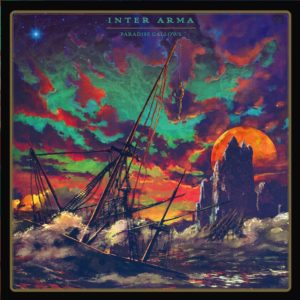 10. Inter Arma – Paradise Gallows
10. Inter Arma – Paradise Gallows
(2016; Relapse)
Paradise Gallows is beauty incarnate, caught in a fit of depression, buried beneath a scorching guitar tones and smothered under a cannonade of percussion as vocalist Mike Paparo growls, shouts and screams with abandon. That beauty is not immediately recognizable amid the sheer impact of the music, but rest assured it’s there. Aesthetically and tonally resembling the rage of a sailor at sea on an acid trip, the psychedelic prowess of the band is used sparingly here to create a palpable anxiety that is exemplified throughout. Like their elite few iconoclastic contemporaries, the flexible genre dynamics of the band are fervently felt in this release, which is unified by a sense of maturity and confidence that signifies a more focused and direct craft. Paradise Gallows is a must hear, a brutal symphony of dynamic compositions. – Brian Roesler
Read: Transcendental experience: An interview with Inter Arma
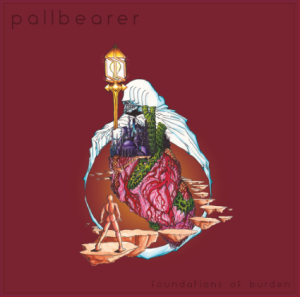 9. Pallbearer – Foundations of Burden
9. Pallbearer – Foundations of Burden
(2014; Profound Lore)
Pallbearer’s brand of doom always skewed a few degrees left of traditional. Where their debut album Sorrow and Extinction revealed them as disciples of Sabbath, with a little bit of side worship of Pagan Altar and Warning, their subsequent releases have taken them into much murkier waters. Embracing prog-rock’s vast expanses, the Little Rock band took their sophomore album Foundations of Burden into challenging places, balancing the cerebral with the emotional in four sides of songs that were as much about their debut album’s sorrow as it was about building something complex and conceptual. These are less songs than suites, rather, each one reaching higher and farther, constructed into something mighty and powerful. Not that they don’t all rock supremely: “Worlds Apart” hits hard with the low end from the get-go, while “The Ghost I Used to Be” balances haunting quiet passages with some of their most furious riffs. Foundations of Burden is where Pallbearer reshaped doom itself, or perhaps let go of the idea that’s what they were supposed to be. That freedom yielded their strongest album to date. – Jeff Terich
Read more: Wider spectrum: An interview with Pallbearer
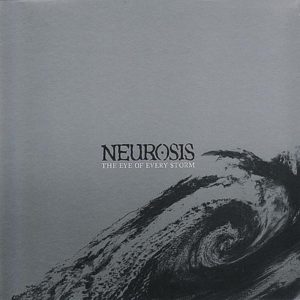 8. Neurosis – The Eye of Every Storm
8. Neurosis – The Eye of Every Storm
(2004; Relapse)
Neurosis has never been a conventional band. Even back in their earliest days of playing crusty hardcore, their approach fell well outside of genre norms. So by 2004 experimentation and evasion of easy categorization had become kind of their thing. Following a strange yet no less interesting release with former Swans vocalist Jarboe in 2003, Neurosis celebrated their final release for Relapse with what’s perhaps the least metal album in their catalog. The Eye of Every Storm sounds like Neurosis—that much isn’t in question—but it sounds like Neurosis at their most brooding, with few moments of the explosive sludge that formed the basis of all-time greats Through Silver in Blood and Times of Grace. Rather, this is a meditative and spacious record that shares more in common with Godspeed You! Black Emperor than Godflesh, each track revealing itself slowly and mournfully, their stark guitar melodies enhanced by piano and synth. The immediate churn of “Burn” is the sole bridge back to their most furious anthems, while the title track and “Bridges” stretch out well beyond 11 minutes apiece, flexing the band’s nuance gorgeously and devastatingly. That the album ends with a stark acoustic track proves just how far they had come at this point. Neurosis still had more destroying to do in the years ahead, but The Eye of Every Storm showed that’s not the only thing they could do. – Jeff Terich
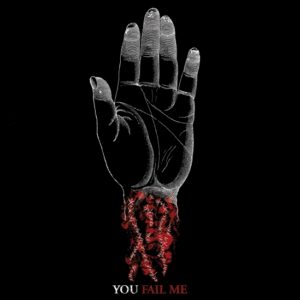 7. Converge – You Fail Me
7. Converge – You Fail Me
(2004; Epitaph)
On “Last Light,” the first proper song on Converge’s fifth album You Fail Me, Jacob Bannon asks something pretty big: “I need you to be the strength of widows and soul survivors/ I need you to be as fearless as mothers and new fathers.” It’s at this point where the listener is faced with a crisis of commitment. You Fail Me isn’t an album that seeps casually into the background or gets by on generic mosh-pit anthems. This is Converge at their most visceral and exhausting, coming off of the introspective poetics of Jane Doe and unleashing an exorcism of emotional weight borne from countless human failures. It’s a lot to take in, but it gives it all right back in the form of transcendent catharsis. While by no means the band’s simplest album, it’s the one that draws the starkest contrast between their shortest, punchiest hardcore tracks (“Hope Street,” “Black Cloud”) and their most experimental diversions, from the Swans-like dirge of “In Her Shadow” to the Neurosis-inspired sludge of the title track. Yet no moment cuts as deep as the climax of “Last Light”: “This is for the hearts… still… beating!” Oh, it’s not just beating—it’s pounding like a goddamn jackhammer. – Jeff Terich
Read more: Celebrate the Catalog: The complete Converge discography
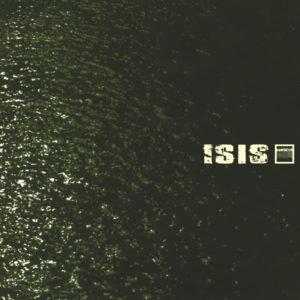 6. Isis – Oceanic
6. Isis – Oceanic
(2002; Ipecac)
Compared to other bands of their ilk, Isis’ music—especially on Oceanic—is not as earth-shatteringly bleak so much as it is cerebral. In that sense, it can be nightmarish one second (e.g. “The Other”) and drop-dead gorgeous the next (e.g. “From Sinking”). Consider the water-centered theme of the record. Why does the deep blue sea conjure up so much terror within us? Is it the improbable vastness? The nebulous depths? It’s oft-repeated that we know so very little about the sea (which is roughly over 70 percent of our planet, in case you forgot), and it seems Isis is struggling with that knowledge here—or lack thereof, rather. (One can surely empathize.) You can hear it in the long stretches without vocals, the relatively sparse sections that nonetheless build up anticipation for something. They’d come to terms with all that on Panopticon, but on Oceanic, Isis made a stunner of kraken-sized proportions. – Ben Braunstein
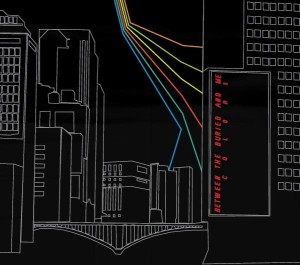 5. Between the Buried and Me – Colors
5. Between the Buried and Me – Colors
(2007; Metal Blade)
There was a time when this band was considered the heir to Dream Theater’s throne, and this is the album that caused those claims. Dream Theater had just released both their studio album Octavarium and the live record Score, widely considered to be the peak of their power; this was to follow a year later. Between the Buried and Me picked up where Dream Theater left off, fusing ’90s progressive metal with modern influences spanning from metalcore, death metal and post-hardcore to create the template that almost every contemporary prog metal band would draw from (well, at least until djent came along). They had Mr. Bungle’s knack for breakneck genre-turns, Pink Floyd’s knack for album-length composition broken into workable song-length units, and wrapped it up in a package that, for the first time since the ’80s, made prog metal feel as heavy as it was progressive and technically oriented. Some feel this was their peak, others feel that would come later with Future Sequence, and some other naysayers would argue they peaked with the previous (and more song-oriented record) Alaska; regardless of that position, Colors was the record that not only catapulted them into the metal stratosphere, but also gave them their still-enduring identity as a progressive metal band first and a metalcore-derived band second. – Langdon Hickman
 4. Deafheaven – Sunbather
4. Deafheaven – Sunbather
(2013; Deathwish Inc.)
I remember once writing on Twitter about how Sunbather was a reminder, a forceful shout to the universe that communicated how “We are here, we feel, and exist, temporary as it is.” Sunbather is a genre-transcendent masterpiece. Frenzied yet balanced, sometimes slipping into a soothing deathlike calm. This album is a sonically warm soundscape of passionate fits that are crafted into long periods of meditative aural destruction. Equally as such, there are blissful bouts of calm. It is passionate. It is emotional. It demands one’s attention.
Sunbather is a feeling. It’s an experience. That tired, old, phrase has been barked out over and over again to emphasize how important something is, but in this instance, it really is. It’s a brutal, lump-in-your-throat, heart-on-your-sleeve totem of blackgaze. Or maybe it won’t mean anything to you. That’s every relationship, every work of art, every experience you will ever encounter. If it isn’t discarded, it becomes a part of you. – Brian Roesler
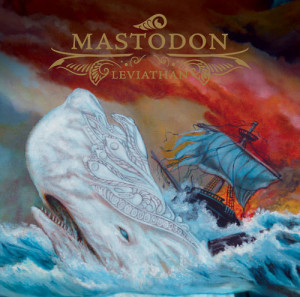 3. Mastodon – Leviathan
3. Mastodon – Leviathan
(2004; Relapse)
Next to maybe Converge, Mastodon has had the most notable metal career since our computers survived Y2K. The Atlanta-based quartet began to transition from their sinister, sludge-ridden roots on Remission toward a more progressive and conceptual framework by 2004. This inclination first surfaced on their legendary classic, Leviathan. Built around Herman Melville’s Moby Dick, Mastodon’s second studio album quickly captivated metal fans across the globe. Ripping, rolling tracks such as “Blood and Thunder,” “Island” and “Iron Tusk” emblazoned the band’s ferocity. On the other hand, “Naked Burn” and the entrancing, 14-minute “Hearts Alive” foreshadowed the inevitable evolution into outright prog metal.
This pivot into uncharted waters allowed for a heavy amount of experimentation. Guitarists Brent Hinds and Bill Kelliher unleashed unparalleled technical abilities. Their riffs throughout Leviathan seem to ensnare and entwine themselves in wondrous displays of talent. Drummer Brann Dailor also benefitted from Mastodon’s switch. Dailor complemented his aggressive rolls and beats with jazzier patterns and polyrhythms. Troy Sanders and Hinds fully embraced a dual vocal approach—Sanders’ gritty growl pairs well with Brent Hinds almost crooning yell. It also included the beginning of a now long-running tradition of Mastodon’s in which Scott Kelly of Neurosis appears somewhere on the record. For Leviathan, “Aqua Dementia” pitted Kelly against a raging Brent Hinds. The album as a whole solidified the foundation for one of metal’s more storied bands of the last 20 years and, at the time, introduced metal to an entirely unsuspecting audience via its mainstream success. – Cody Davis
 2. Baroness – Blue Record
2. Baroness – Blue Record
(2009; Relapse)
Of the many trends that emerged in the past 17 years of metal—Ballou-produced crustwave, everything-gaze, old school revisionism—the greatest was metal’s refreshing embrace of classic rock ‘n’ roll. The folky acoustic interludes and southern-rock riffs of Baroness’ debut album suggested it was always in them, but on second album Blue Record, the Savannah, Georgia group fully adopted a sludgy rock sound influenced as much by Thin Lizzy as it was Melvins or Eyehategod—more so, actually. John Baizley still unleashed a mighty roar, while then-drummer Allen Blickle provided some of their most crushing rhythms. Yet in the intertwining guitar riffs between Baizley and Pete Adams, there was a fluid chemistry and sense of vintage rock ‘n’ roll fun that their excellent debut Red Album merely suggested. When Blue Record was released, there were a few gripes here and there about the “disco beats” on “Swollen and Halo,” but whatever adjustment was necessary for some fans, it represented an entirely new level for the band, their heaviness and boundless creativity resulting not only in their best set of songs, but in their most cohesive and seamless album to date. They haven’t stopped evolving since this was released eight years ago, and in some ways Baroness has transitioned away from metal. But Blue Record was the perfect ratio—one part burly guttural menace blessed with the heat of 1,000 volcanoes to one part Kiss-army Marshall stack Trans Am mixtape. – Jeff Terich
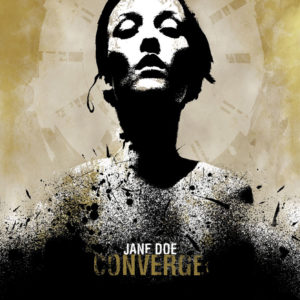 1. Converge – Jane Doe
1. Converge – Jane Doe
(2001; Equal Vision)
When Converge vocalist Jacob Bannon ranked the band’s albums for Noisey, he did so in reverse chronological order, suggesting that as the band evolves, each new release ends up being a personal best for the band. It’s not an unreasonable position—there’s no point in making music if you’re not trying to do better with each new recording. But Jane Doe just doesn’t look right smack dab in the middle of the batch. It’s a masterpiece—a moment in which the boundaries of hardcore were pushed out well beyond the scene and into the stratosphere. With this 2001 album, celebrating its 16th anniversary this month, Converge emerged from a three-year chrysalis reborn as a band for whom emotional catharsis and raw expression surpassed genre, style or approach.
It’s not a coincidence that the number one album on our list of the best metal records of the past 17 years isn’t one that neatly fits into any category. With this album—and all subsequent releases—Converge solidified their position as one of the most important bands in heavy music. Pivoting from their earlier, rawer collections of blistering hardcore, Converge flexed every muscle they had on Jane Doe, exploding out of the gates into extreme metalcore with “Concubine,” surging into punchy post-hardcore with “Distance and Meaning,” delivering graceful shoegaze with “Phoenix in Flight” and exploring the depths of their ambition with the stunning, epic title track. It’s not simply the diversity of the album that makes it incredible, however, it’s in the emotional weight and the breathtaking musicianship where Converge reinvented themselves as abstract hardcore artisans. When the album was released, Bannon didn’t even want to include any written words on the artwork outside of the credits, which their label didn’t particularly care for. And many of the reviews at the time were a mixed bag. But that’s just the risk you run: When you’re at least a decade ahead of your time, you’re bound to be misunderstood. – Jeff Terich


I am so glad you have recognized albums here that the Rolling Stone top 100 missed, especially placing Baroness Blue at number 2. WORD.
I hated this list so much that I made one of my own out of pure spite.
Make sure never to tell us what’s on it, because we might actually enjoy a fun conversation about recommending cool records we might have missed. We’d hate that.
Here.
I parenthetically included albums from the same band that would be included if I weren’t limiting it to one entry per artist
66. Deceased… – As the Weird Travel On
65. Deathevokation – The Chalice of Ages
64. Emptiness – Nothing But the Whole
63. Minsk – The Ritual Fires of Abandonment
62. Denial – Catacombs of the Grotesque
61. Bloody Sign – Explosion of Elements
60. Cadaver – Necrosis
59. Mournful Congregation – The Book of Kings
58. Incantation – Vanquish In Vengeance (Primordial Domination)
57. Desolate Shrine – The Sanctum of Human Darkness (The Heart of the Netherworld)
56. Mouth of the Architect – Quietly
55. Grayceon – This Grand Show
54. Absu – Tara
53. Deströyer 666 – Cold Steel… For An Iron Age
52. Summoning – Let Mortal Heroes Sing Your Fame (Old Mornings Dawn)
51. Arcturus – The Sham Mirrors
50. Inquisition – Bloodshed Across the Empyrean Altar Beyond the Celestial Zenith (Ominous Doctrines of the Perpetual Mystical Macrocosm)
49. The Ruins of Beverast – Foulest Semen of a Sheltered Elite (Blood Vaults, Unlock the Shrine)
48. Inverloch – Distance | Collapsed
47. Satan – Life Sentence
46. Sigh – Imaginary Sonicscape (Hangman’s Hymn)
45. Enslaved – Mardraum (Monumension)
44. Murkrat – Drudging the Mire
43. Blood Incantation – Starspawn
42. The Axis of Perdition – The Ichneumon Method
41. Mortuary Drape – Tolling 13 Knell
40. Altars – Paramnesia
39. Varathron – Untrodden Corridors of Hades
38. The Dying Light – Survival Guide to the Apocalypse
37. Thorns – Thorns
36. Predatory Light – Predatory Light
35. Adversarial – Death, Endless Nothing, and the Black Knife of Nihilism (All Idols Fall Below the Hammer)
34. Execration – Odes of the Occult
33. Dead Congregation – Promulgation of the Fall (Graves of the Archangels)
32. Phobocosm – Deprived (Bringer of Drought)
31. Ingurgitating Oblivion – Vision Wallows in Symphonies of Light
30. Evoken – Quietus (A Caress of the Void, Antithesis of Light)
29. Morbid Angel – Gateways to Annihilation
28. Avenger – Feast of Anger, Joy of Despair (Mir v Haremu Smrti)
27. Lvcifyre – The Calling Depths
26. Unaussprechlichen Kulten – Keziah Lilith Medea
25. Nightbringer – Terra Damnata (Ego Dominus Tuus)
23. Rune – The End of Nothing
22. Mitochondrion – Archææon (Parasignosis)
21. Blut Aus Nord – The Work Which Transforms God (Memoria Vetusta II: A Dialogue With the Stars)
20. The Crown – Deathrace King
19. Ulcerate – The Destroyers of All (Everything Is Fire)
18. Helstar – Vampiro
17. Defeated Sanity – Passages Into Deformity
16. Nile – In Their Darkened Shrines (Annihilation of the Wicked)
15. Chthe’ilist – La Dernier Crépuscule
14. StarGazer – A Merging to the Boundless (The Scream That Tore the Sky, A Great Work of Ages)
13. Anata – Under a Stone With No Inscription (The Conductor’s Departure)
12. Blind Guardian – A Night at the Opera (Beyond the Red Mirror)
11. !T.O.O.H.! – Pod Vladou Bice (Rad a Trest)
10. Negura Bunget – OM (N’Crugu Bradului)
9. Pharaoh – Be Gone (The Longest Night)
8. Slough-Feg – Down Among the Dead Men (Traveller)
7. Pagan Altar – Mythical & Magical (Lords of Hypocrisy)
6. Primordial – Storm Before Calm (To the Nameless Dead, The Gathering Wilderness)
5. Esoteric – Paragon of Dissonance (The Maniacal Vale, Subconscious Dissolution into the Continuum)
4. The Chasm – Procession to the Infraworld (Farseeing the Paranormal Abysm, Conjuration of the Spectral Empire)
3. Immolation – Close to a World Below (Unholy Cult)
2. Gorguts – From Wisdom to Hate (Colored Sands)
1. Hammers of Misfortune – The August Engine (The Bastard, Dead Revolution)
These are all excellent albums. We just happened to choose different ones by a process of six people voting. But hey, good couple of decades for metal, that much we can agree on.
Yes to Hammers and Slough Feg! I’d add Magic Circle too.
I can see you’re hitting the nail on the head with your list that I feel is wrong in the list in the article . . .
Power Metal, Progressive Metal, Melodic Rock/Metal, Black Metal, Gothic Metal, REAL Death Metal are all . “Uncool” and ignored by these fly-by-night trendhopping artblogs. They want ONLY the “cool” things. No need to pay attention to whatever comes from outside their narrow very narrow bandwidth
You’re correct of course, but would it make any sense for them to do otherwise? Because it’s not a metal site, it is a sampling of the more arty side from an outsider’s perspective. Want a list from lifers, get Iron Fist to do a list!
I wouldn’t say that we’re outsiders. The six of us that wrote the list listen to a lot of metal and have for a long time. However, Treble isn’t specifically a metal site, so maybe we’re just coming at it from a more eclectic perspective? Either way, we love metal, we love metal that’s unconventional, we love metal that’s traditional, it can all coexist.
Beyond the Red Mirror as Blind Guardian’s 2nd best album? You crazy. Tales, Somewhere, Imaginations, and Nightfall are all way better.
Needs Cobalt and more Isis and Panopticon. In fact, it needs the album Panopticon from Isis, and Autumn Eternal from Panopticon.
…no Obzen?
Madness.
Seriously great list!!
This is such a great list! Well done! Thank you, thank you, thank you for including Yob, Inter Arma, Pallbearer and Elder on your list, but especially…Kylesa. I don’t know why, but Kylesa always gets overlooked on these lists. They are, hands down, my favorite band and I love their evolution from their self titled debut through Exhausting Fire. I just hope we hear from them again. I celebrate their entire collection!
good list !!, but too much doom or black metal and yea… something like that, i expect more thrash or death, but as i said, it’s still good list
Great list! I would add Prometheus by Emperor and Gin by Cobalt.
I never understand why Mgla gets so much praise… they sound so bland and generic.
Great list and lots of recommendations to check out. Surprised by no Cult of Luna though
Thanks for this list, it’s been a good reference for an old man to catch up on what’s been happening in the scene for the past 17 years. Metal certainly has grown up since the 70s and 80s, although I am finding there is a LOT of “hipster shoe-gaze” in this list.
This is what you get when indie kids and hipsters make a metal list. Boris??? Gimme a fucken break. Most of these albums place discordant noise above all else. As another person asked: where is the power metal, the melodic death metal, the “true” metal..? Not one Amon Amarth record here. Nor Grand Magus and other titans of genuine metal craftsmanship.
Go back to groomin yer beards ya wankers.
Maybe our follow up list is to your liking? Still no Amon Amarth but there’s no -gaze
https://www.treblezine.com/36919-10-more-best-metal-albums-of-the-millennium/
It is a good time to be a metalhead.But Cobalt, Nile, Mantar and Slough Feg.
Good list. Glad to see you got High on Fire on the addendum, obvious omission by anyone’s perspective.
I’ve only really gotten into metal in the past ~5 years, so can’t make a list of 66 amazing albums of the 21st century that’s particularly deep or representative, so instead here’s a list of my idiosyncratic faves that includes metal as well as hardcore and punk which I have a longer history of appreciating. And yes, I ranked Horse the Band over Mastodon (personal preference is just that – I’m certainly not arguing that they are a more influential, talented, or popular band lol). R.T.’s list looks awesome, so many bands there I need to check out. or whose full albums are in my bandcamp cart.
Converge – Jane Doe – 2001
Propagandhi – Supporting Caste – 2009
Pig Destroyer – Phantom Limb – 2007
Bane – Give Blood – 2001
Tragedy – Vengeance – 2001
Mgla – Exercises in Futility – 2015
Majority Rule – Interviews With David Frost – 2001
Against Me! – Searching for A Former Clarity – 2005
Suicide File – Some Mistakes You Never Stop Paying For – 2005
Cloud Rat – Qlipoth 2015
Planesmistakenforstars – Up in Them Guts – 2004
High on Fire – Snakes for the Divine – 2010
Cobalt – Slow Forever – 2016
Transistor Transistor – Erase All Names and Likeness – 2005
Isis – Oceanic – 2002
Blacklisted – No One Deserves Here to Be Here More Than Me – 2010
Boysetsfire – After The Eulogy – 2000
American Nightmare – Background Music – 2001
City of Caterpillar – S/T – 2002
Blackeyes – S/T – 2003
Tau Cross – S/T – 2015
Gridlink – Longhena – 2014
Eternal Champion – The Armor of Ire – 2016
Nux Vomica – S/T – 2014
Capital – Homefront – 2007
Battle of Mice – A Day of Nights – 2006
Modern Life is War – Witness – 2005
Leftover Crack – Fuck World Trade – 2004
Horse the Band – R. Borax – 2003
Agoraphobic Nosebleed – Arc – 2016
Krallice – Hyperion – 2016
Fucked Up – Hidden World – 2006
Sumerlands – S/T – 2016
Queens of the Stone Age – Songs for the Deaf – 2002
A Wilhelm Screen – Mute Print – 2004
Mastadon – Leviathan – 2004
Panopticon – Kentucky – 2012
Darkest Hour – Mark of the Judas – 2000
Boris – Akuma – No Ata – 2001
The Sword – Age of Winter – 2006
From Ashes Rise – Nightmares – 2003
Strike Anywhere – Change is a Sound
Municipal Waste – Hazardous Mutation – 2005
Cattle Decapitation – Monolith of Inhumanity – 2012
Blood Brothers – Burn, Piano Island Burn – 2003
Deafheaven – New Bermuda – 2015
Gospel – The Moon is a Dead World – 2005
Shai Hulud – That Within Blood Ill-Tempered – 2003
Rwake – Voices and Omens – 2007
pageninetynine – document #8 – 2001
Death spell Omega – Fas – Ite, Malediction, in Ignem Aeternum – 2007
Fuck the Facts – Desire Will Rot – 2015
Kylesa – Spiral Shadow – 2012
Kowloon Walled City – Container Ships – 2012
Children of Bodom – Hate Crew Deathroll – 2003
Discordance Axis – The Inalienable Dreamless – 2000
3 Inches of Blood – Advance and Vanquish – 2004
Pelican – Australasia – 2003
Pure Disgust – S/T – 2016
Akimbo – City of the Stars – 2004
Hope Conspiracy – Endnote – 2001
Immortal Bird – Empress/Abscess – 2015
Mutoid Man – War Moans – 2017
Oathbreaker – Rheia – 2016
Theories – Regression – 2015
Nightwish – Wishmaster – 2000